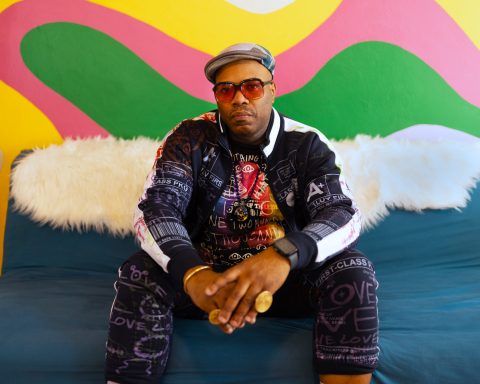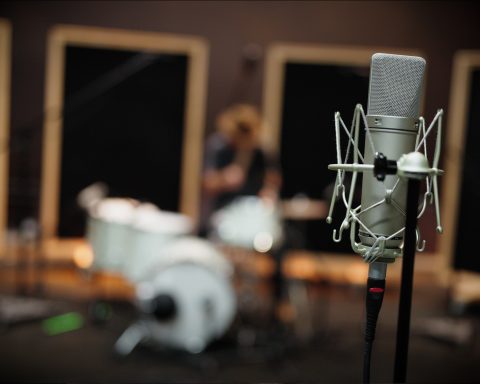Foo Fighters has left an indelible mark on music as a band with two percussive powerhouses: primary songwriter Dave Grohl and the late, great Taylor Hawkins. The exhilarating rush of the “My Hero” drums—two intertwined beats propelling the track forward—forms the bedrock of the rock radio staple. And with the untimely passing of Hawkins, the song has taken on another layer of poignancy, culminating in his son Shane’s blistering performance of the classic at a pair of tribute concerts. Let’s examine the pair of pummeling patterns that define “My Hero” and find what makes the Foo Fighters song a masterclass and Hawkins a hero to drummers across the globe.
Who is the Hero?
“My Hero” was first released on Foo Fighters’ career-defining The Colour and the Shape album in 1997. There is a slew of opinions about for whom Dave Grohl wrote the anthemic pounder. Was it about Kurt Cobain, his mother, another unsung icon? Even after the song became a worldwide hit, Grohl remained vague about the song’s inspiration.
The writer would address the subject with quiet politeness until a column for The Atlantic. In that piece, he explained that it examines what integrity and fatherhood mean to him. Perhaps, with distance, Grohl discovered he was investigating something he didn’t see at the time. Or, like many artists, he felt revealing too much might impede the way “My Hero” developed meaning for listeners.
Layered Approach: A Pair of Blended Beats
First, let’s look at the two separate drum parts: the primary open hi-hat-driven pattern and the tom beat overdub. Grohl plays both on the recording, layering the two grooves on each other. The combined effect is so seamless it may fool casual listeners into thinking it’s a single performance.
The relentless kick drum of the primary pattern provides “My Hero” with its subtle swing. Grohl leaves his foot off the second, third, and fourth downbeat. This touch lends the song a slight gallop, not unlike the 2-4 pause on the hi-hat that gives Charlie Watts his unique feel. A drummer has to be in shape for this part, but once the foot settles in, the song takes off.
By contrast, the tom pattern fills the corners of the groove. It blends with the open hi-hat beat to create a syncopated stew, leaving the perfect spot open for Grohl’s iconic pair of flammed hits. Gil Norton’s roomy production gives the drums a spaciousness evocative of classic Led Zeppelin albums.
"Taylor Hawkins’ take on the iconic intro was a defining moment in the band’s shows, a clarion call for audiences, letting them know a modern classic was on deck."
Bonham Bits and a War Beat
Indeed, there are certainly plenty of John Bonham-isms throughout “My Hero.” Grohl brings in a signature Bonzo feel to a small flashy rolling fill at 2:29. The double hits in the chorus harken to the authoritative 8th note pattern at the end of “Good Times Bad Times.”
The relentlessness of the song also recalls Grohl’s tribal drumbeat in “Red War” from the artist’s solo metal project, Probot. That crushing track featured Max Cavalera (Sepultura, Soulfly) on vocals. With its walloping snare slams and sizzling cymbals, the “My Hero” drumbeat declares an all-out battle against pensive internal dialogue.

Key Fills and Breakdowns
The song’s two trademark eighth-note snare hits blend into the all-out attack of the kit. Again, the live, reverb-laden drum sound adds to the chaotic mood, supporting the guitar bluster and yearning vocals. There is a sense of building that the player should strive to develop with each measure. In performance, “My Hero” should culminate in a complete rhythmic release.
A couple of breakdowns show an opportunity to see how locked in those cymbal crashes are with the right foot. These accents aren’t mere afterthoughts—they are as decisive as karate chops. To that end, no aspect of “My Hero” is overly subtle. For example, the gorgeous release into frantic vocal and guitar at the apex begins with a satisfying fill. That distinctive 16-note snare drum roll launches us into the end.
The Taylor Hawkins Legacy: Sustained Power
Foo Fighters drummer Taylor Hawkins adapted the multi-tracked approach for one drumkit, a viable alternative in a live setting. Hawkins’ take on the iconic intro was a defining moment in the band’s shows, a clarion call for audiences, letting them know a modern classic was on deck. Music fans and professional peers alike noted Hawkins for his formidable chops and incredible athleticism. Taylor effortlessly led the Foos through extended sets, during which he even took the microphone for impassioned covers of Queen, Led Zeppelin, and others.
Grohl also held Hawkins in high regard, publicly heaping praise on the drummer. “When you have a drummer like Taylor Hawkins in your band, I don’t necessarily miss being the drummer because I have the greatest drummer in the world,” he said in an interview with 60 Minutes. In footage from the Taylor Hawkins Tribute Concert at Wembley Stadium, Shane Hawkins imbues his father’s agile style with a forceful dynamic all his own, proving that the family talent runs deep.
"Taylor Hawkins adapted the multi-tracked approach for one drumkit. Shane Hawkins imbues his father's agile style with a forceful dynamic all his own."
More than anything, “My Hero” is an example of how relentless drums can drive a track. As an exercise in sustaining and building power, “My Hero” is valuable to any drummer’s repertoire. That power is present from the beginning and builds up to a sense of discovery at the conclusion. At its core, the song seems to say, “We’re going to surrender everything to a driving need to know, and we’ll go until dawn to figure it out.” Thanks to the lasting influence of Taylor Hawkins and the magic of songs like “My Hero,” future generations will have signposts on that journey of discovery.
How to Play "My Hero"










